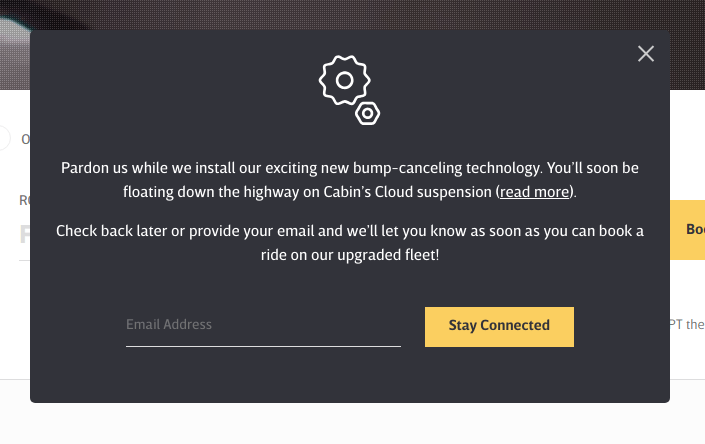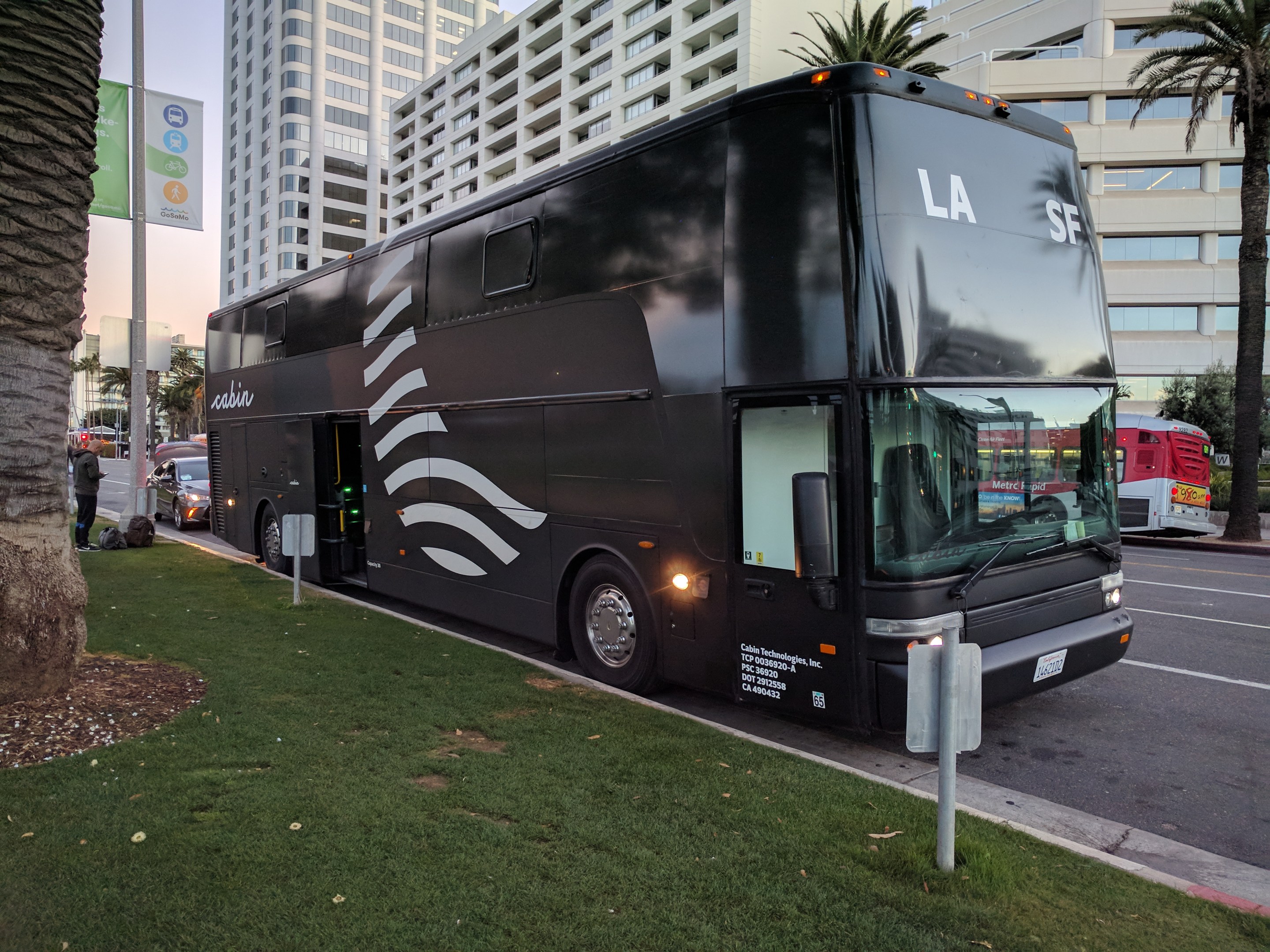It's like a "Ritz Carlton on wheels," went the chipper reports a year ago on the launch of Cabin, a bus service--previously branded as 'Sleep Bus'--that runs overnight between Santa Monica and San Francisco. The tech press seemed enthusiastic about sleeping the journey away on a bus full of bed racks.
Streetsblog tried the bus out in 2017 and wanted to believe. But after a night of a vibrating diesel engine, swaying back and forth, and bumping down Interstate 5, the conclusion was this isn't a hotel on wheels. Shockingly, it's a bumpy, noisy bus with shelves instead of seats.
Well, Streetsblog wasn't alone. Below is the pop-up window that now appears if one tries to book travel on the bus:

From a Medium post by the company's CEO, Gaetano Crupi:
As a direct response to our invaluable guest feedback, our team has spent the better part of the last year developing a bump-canceling technology we call Cabin Cloud (which you can read more about in Wired & Mashable). We can now eliminate 80–90% of the bumpiness you feel on the road, making US highways feel smoother than trains.
Now it’s time to move out of the lab.
We are thrilled to announce that starting on November 1st we will begin upgrading our vehicles with our new Cabin Cloud suspension and will also be tripling our fleet size in the new year!
This means that every single bed in our vehicles will be outfitted with our patent-pending, snooze-inducing tech. Soon, just about anyone will be able to get a dreamy night’s sleep while on a moving vehicle.
Mashable's story reports that the bed suspension system kind of works--the writer tried out a prototype on a demonstration run on a craggy part of 101. Crupi writes that "Cabin Cloud feels like a Highway Train."
It seems impossible that Crupi has created a bus (or a bed on a suspension inside a bus) that rides as smoothly as a train. No amount of engineering is going to change the fact that if the bus driver has to make a sudden lane change, the motion is going to shake everyone awake. Nor is it going to change the fact that roads are built with steeper grades and tighter turns, especially on ramps, that will still make the bus sway and tilt more than any bed-suspension can compensate for. And then there's the jostling produced by stop-and-go traffic, which also makes arrival times unpredictable. Furthermore, the diesel engine in the bus vibrates and makes noise.
On a train, the engine is in a completely separate unit--the locomotive--and therefore all the vibration and most of the noise is isolated from the passengers. If the train is electric, the propulsion system is basically silent. Steel-wheels-on-steel-rails are inherently more stable than tires-on-asphalt, which is why even the shakiest train is smoother than a bus.
To illustrate, this video was shot on a Chinese high-speed train (of course, there aren't any tracks currently in the US that are nearly this precise):
Try that on a bus.
As Streetsblog has previously reported, there used to be a sleeper train between Los Angeles and San Francisco called "The Lark." Brightline-Virgin, the for-profit operator of rail services in Florida and the U.K., is working on a project to re-establish passenger rail service between LA and Las Vegas. If that ever gets going, maybe some day they'll take a look at an overnight train service between California's two biggest regions? We've got a call in to Brightline-Virgin to see what they think.
In the meantime, if the "Cabin Cloud" tech ever really makes it into service, which the web page says will happen early this year (we have an email out to see if they have a more exact date) we'll give it another go and report back.





